NOV FIBER GLASS SYSTEMS
Transforming glass-fiber infrastructure with connected design and manufacturing utilizing Vault for PowerMill
CUSTOMER STORY
Share this story
“No risks, no ambiguity, no emailing files - it's just beautiful.”
Inefficient analog workflows, frequent customer design changes, version control problems, no single version of the truth, only single operators allowed in each project, client needs it next week.
Do these sound familiar to you? These are real problems that many great engineering businesses face and which cannot be solved within a disconnected, 2D drawing-based, send-it-by-email operation. NOV Fiber Glass Systems broke free from these constraints using Autodesk advanced tools and is now accelerating along its digital transformation journey.
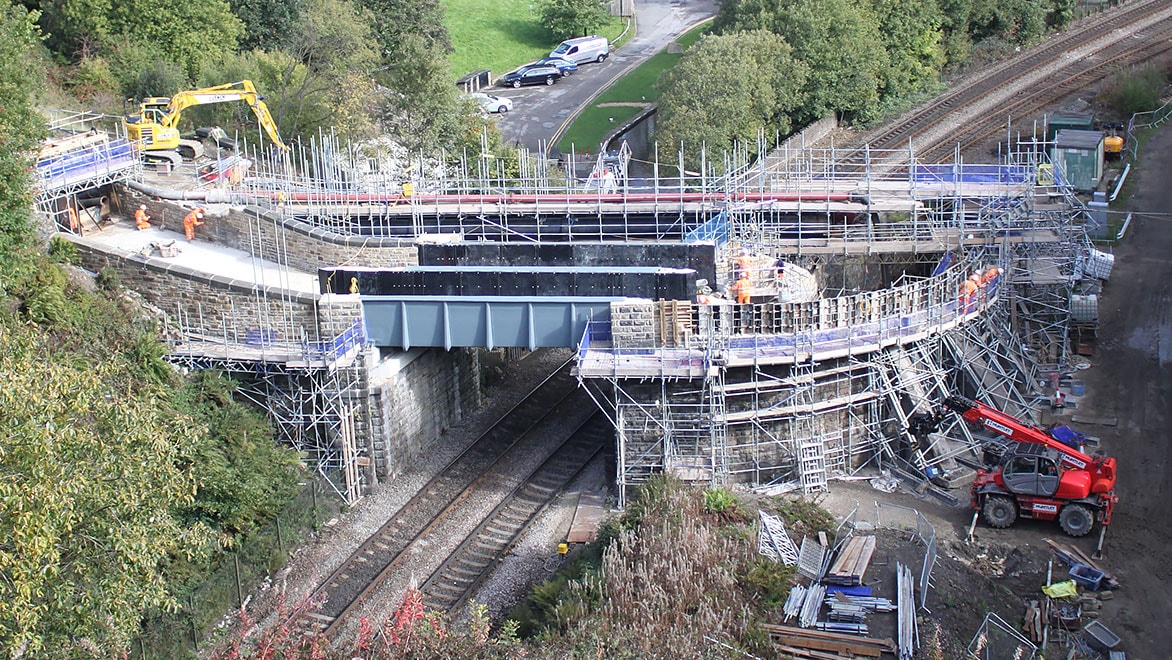
NOV FGS specialize in large installations, such as this fiberglass Aqueduct in Standedge, UK
Seamless, accurate workflow - it's what every company needs
Sometimes the best businesses, with excellent, highly skilled people and premium equipment, still struggle in customer delivery mediocrity because their workflow cannot match their design and manufacturing quality. This must stop if companies are to fulfil their potential.
And it has stopped for NOV Fiber Glass Systems (NOV FGS), a manufacturer of complex fiberglass and thermoplastic structures for the marine, offshore, oil & gas, and construction industries.
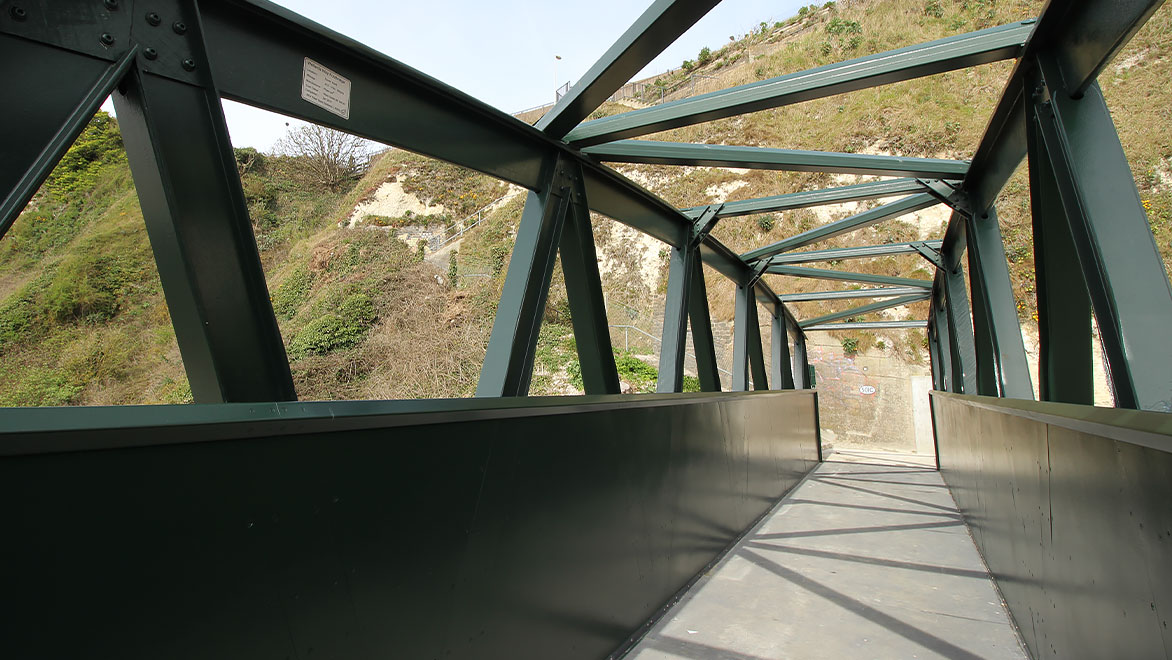
The Devon footbridge was designed, manufactured, and installed within a year.
Delivering robust fiberglass installations for hostile environments
The Plymouth, UK-based company designs and makes elaborate marine and civil structures such as walkways for oil rigs, which have many parts and interfaces and a lot of complexity. Manufacturing pipework and structures in fiber-reinforced composite materials and thermoplastics make the products lighter and resistant to saltwater corrosion.
These vast structures are split into modular zones and features to reduce design complexity. Design engineers create the superstructure in sections, to allow the manufacturing team to begin work faster.
But workflows were routinely disrupted in NOV FGS’s old work regime, constraining their potential productivity. They faced an array of problems, with inefficient workflows at the top.
“Using Autodesk Vault alongside Inventor and PowerMill has had a huge impact on our typical project lead times. What used to take our engineers 3-5 days now takes as little as 20 minutes.”
—Ben Holmes, Digital Design Manager, NOV FGS
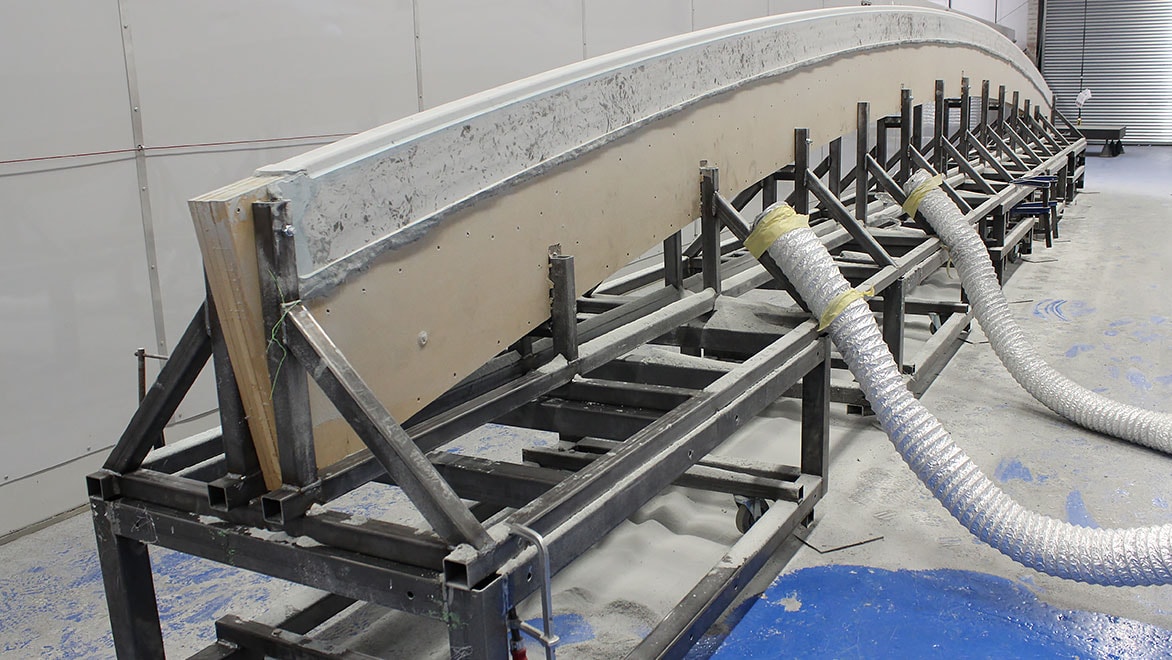
Multiple fiberglass components were produced using 5-axis CNC machining, programmed with PowerMill.
Saving time by streamlining design and manufacture
Frequently, the product is needed in very short order; sometimes, just two or three weeks for a large, multi-component structure. Designs are routinely changed at frequent intervals. Customer changes were challenging because the Design and Manufacturing teams were not seamlessly linked. Analog 2D drawings were sent to the shop floor as early as possible, often by email, but, if a design change was made, the change was not always picked up by Manufacturing, who had started to input the CAM pathways for the old design.
There was no smart technology to join the design and manufacturing software – in this case, Autodesk Inventor through to the CAM software – while making sure cutting paths were optimized to reduce material waste. The manufacturing team could not start their work until products were 100% signed off; they could not begin designing fixturing and selecting milling tools until late in the project, where a low fidelity design could allow them to start work.
This caused huge delays and long lead times, compounded by frequent, last minute design changes. The lengthy workflow meant that the Design team employed seven people, where fewer people would suffice if their engineering IT was fit for purpose. The company’s IT was stretched, often taking up to 40 minutes to boot up, open and save files to and from a central repository.
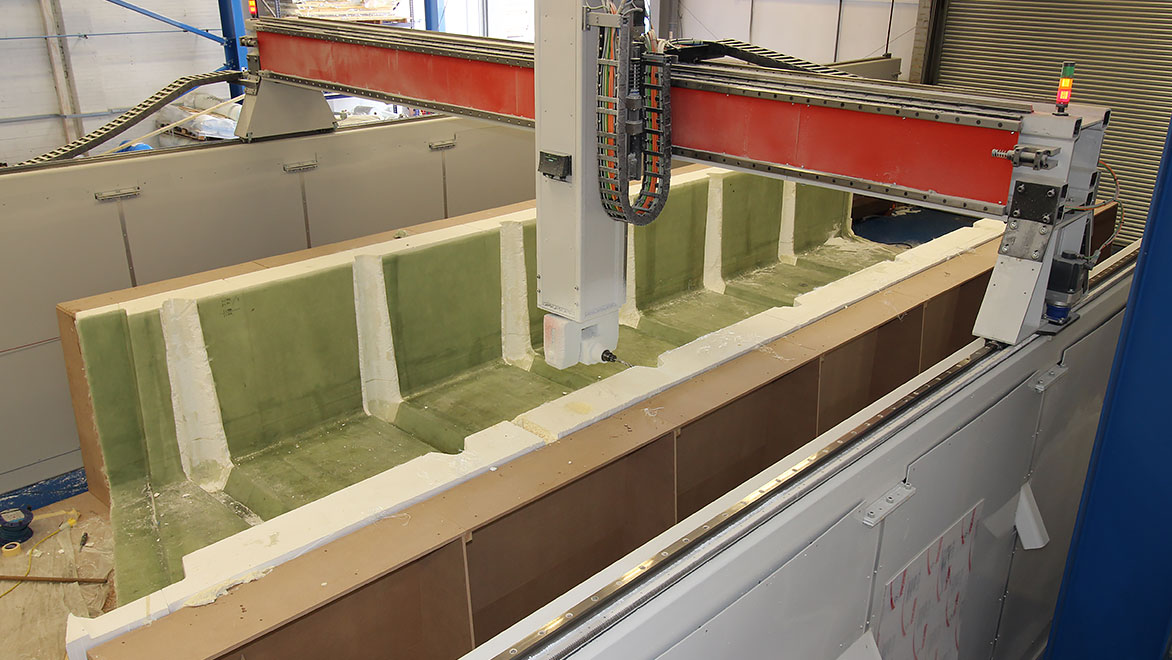
With parts this large, the NOV FGS team had to construct their own 5-axis CNC machine – one of the biggest in the UK.
Big parts need even bigger CNC machinery
As NOV FGS manufactures such huge parts they needed to build their own five-axis CNC machine, with twin cutting heads and a huge 30m x 6m x 2.1m table. Such a unique machine meant that it was imperative that the CAM software produced safe, collision-free NC code.
NOV FGS produces highly-engineered products, however recognized a need to improve their KPIs to strengthen the quality of service to their customer and their needs today and in the future.
Takeover kickstarts the change to transformational workflows
In 2015, US oil and gas engineering multi-national, NOV Inc., bought the family-owned Pipex Ltd. Improving KPIs was a top priority so the company invested in an advanced Autodesk product suite, specifically designed to smooth workflow, connect departments and give the company full vision of its manufacturing process. The improvements in NOV FGS’s workflows and data accuracy, enabling Manufacturing to work with freedom simultaneously with Design, have been transformational.
The process now begins when the customer submits their brief to NOV FGS. The Design team uses Autodesk Inventor to produce low fidelity designs; i.e., outlines of the different components. These basic designs are saved into Autodesk Vault, the product data management (PDM) software that helps streamline workflows. Vault lets everyone in the company – Manufacturing, management, and the Design team – all work from a central source of organized data: collaborating, reducing errors, and saving time.
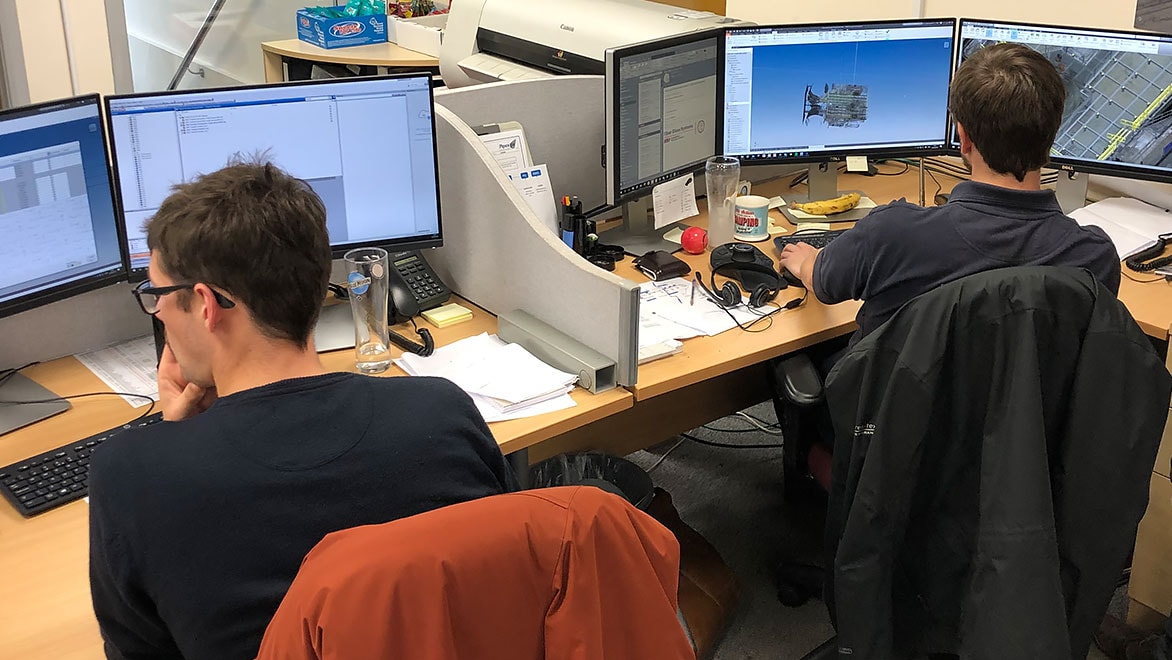
NOV FGS engineers use multiple Autodesk products including Inventor, Vault, PowerMill, and "Vault for PowerMill".
“We considered other CAM software products, but Autodesk PowerMill was the only one that could handle the size and complexity of models being machined. The others failed or crashed.”
—Ben Holmes, Digital Design Manager, NOV FGS
Manufacturing an improved design/make workflow
The Manufacturing team uses Autodesk PowerMill and a new tool, Vault for PowerMill, that allows the manufacturing engineers to put their CAM projects into Vault that allows traceability and relationships to be created between Inventor’s low fidelity models and PowerMill. Using a combination of automation and manual processes, the NOV FGS engineering team can nest the parts on the CNC machine bed to maximize material usage and minimize waste, which had been common, previously.
PowerMill is used to define the entire machining process using a digital twin of the CNC machine, to simulate the machining before work begins. Concurrently, Design uses Inventor to finesse the design, incorporating up-to-the-second client changes.
At this point, the high-fidelity designs are imported into Vault. Thanks to the traceability created between the Inventor and PowerMill files, Vault for PowerMill informs the engineering team of the update and helps to replace the low fidelity designs with high fidelity versions. PowerMill uses built-in automation – customized macros – to generate all the three- and five-axis machining toolpaths using “tried and tested” machining practices from years of previous NOV FGS toolpaths. By doing this, CAM programming time and the risk of human error are greatly reduced, and machining consistency is improved.
Extensive use of automation within PowerMill shortens CAM programming time, reduces error, and improves consistency.
“Before using Vault and PowerMill, we wasted 30% of our engineering time waiting for data files to open, save or close. Now we are able to open the data we need in seconds – the wait time is almost zero”
—Ben Holmes, Digital Design Manager, NOV FGS

Time-lapse video showing dual 5-axis CNC milling heads machining a polystyrene plug (video: 1:11 min.).
Digital twins and G-code file management help prevent errors
The entire machining process is simulated and validated to check for collisions, using digital twins of the machine. Once approved, the correct NC programs are exported to Vault and shared with the shopfloor team, allowing milling to start. This then completes the digital workflow from design to manufacturing to shop floor with all the data stored in a single repository, with full traceability.
Another tool, “Vault for NC files” allows NOV’s machine tool operators to send the NC programs directly to the machine tool controllers, effectively connecting them direct to Vault. Any changes made to the NC files on the controllers can be synchronized back to Vault so that not only are the unproven NC files captured in Vault but also the proven ones. This means that any repeat work in the future can be sure to use the correct NC files for the job.
“Connecting PowerMill with Vault for PowerMill to 11 modern machines running 3- and 5-axis NC code means we can meet our customer needs 24/7.”
—Ben Holmes, Digital Design Manager, NOV FGS
Proving the value of a digital workflow
Having invested in these new, digitally connected workflows, the NOV FGS team continues to see success throughout the business. Ben Holmes recalls a case where a critical feature on a large CNC machined component did not match the paper drawing that was issued to accompany the works order. After an initial investigation, it was confirmed that the shop floor team were using an out-of-date 2D drawing printed shortly before a last-minute design change. The digital workflow had correctly captured and adapted to ensure the right feature had been machined – revealing the full value that it provided to the company.
The digital overhaul of NOV FGS’s engineering and manufacturing technology has helped save the company tens of thousands of pounds, in both time and hard cash, says Ben Holmes. The autonomous workflows are a joy. “No risks, no ambiguity, no emailing files – it's just beautiful,” he adds.
There is more to come, as the company is installing 4K TV sets in the factory to share the same screens as Design, supporting the move to a fully integrated, paperless business.
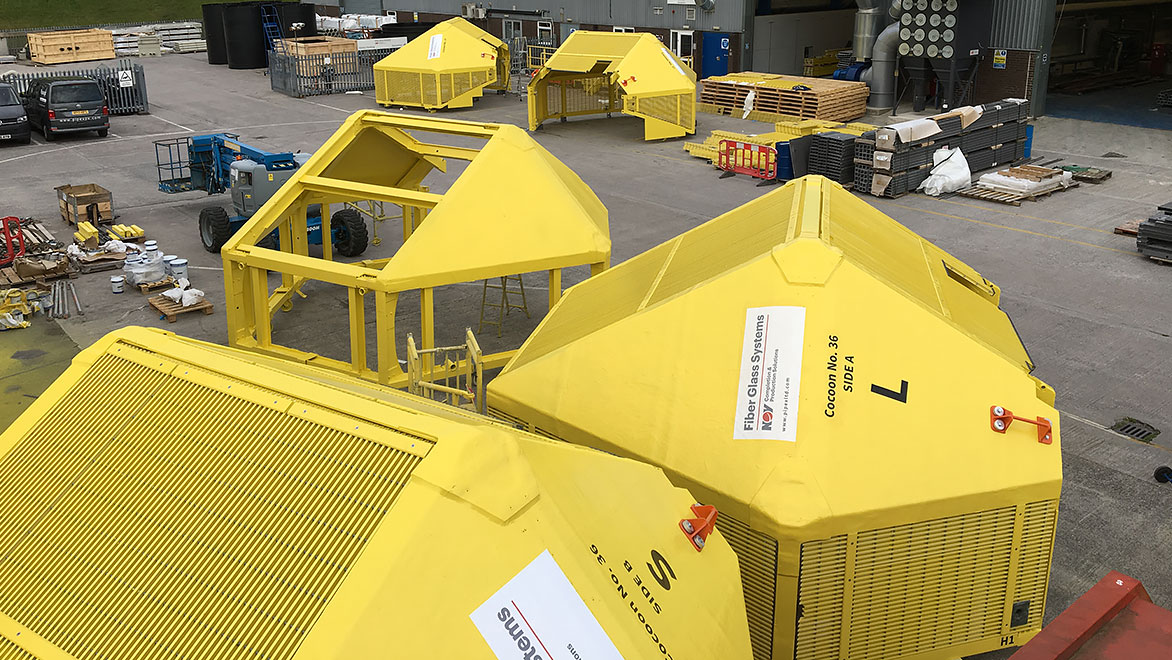
The NOV FGS team serves the needs of a wide variety of different engineering projects worldwide.
More business outcomes through digital transformation
Following the implementation of Vault for PowerMill, NOV FGS has seen a number of significant outcomes
- Time: Previously, the company was losing between 5% and 10% of man-hours a week from sending old version drawings to Production and making components that were later changed. This has been eliminated with the Autodesk digital technology suite.
- Collaboration and savings: Multiple users in all departments can access all files. Headcount in the Design team has streamlined from seven to four, and yet productivity has been maintained and even increased.
- 3D models: Migration from using 2D drawings in a drawing works order-based system to connected, shared, single source 3D models saves 100s hours of time.
- Several large productivity improvements: For example: connecting Design to Manufacturing using PowerMill and Vault for PowerMill has removed manual hole drilling. A process that took 30 minutes by hand on the CNC machine now takes six minutes, including loading.
- Interfacing design with ERP software: Structures built-in to Inventor can speak to the company’s ERP system, where the model is used for procurement, listing exact materials needed, and for CNC programming.
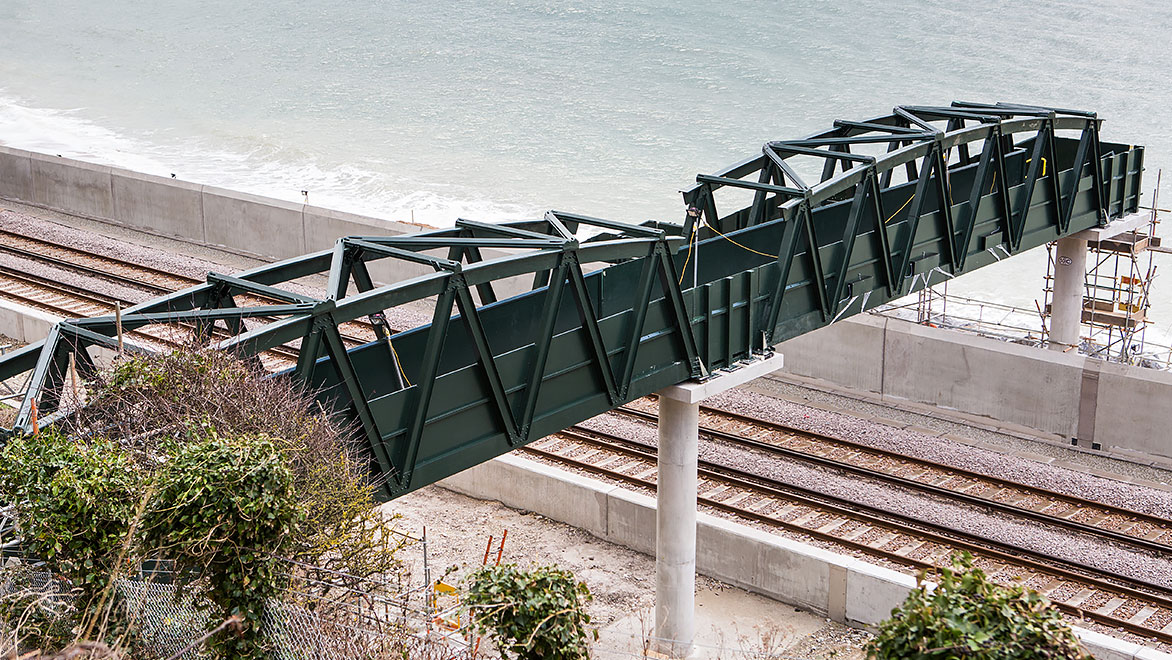
The fiberglass footbridge needed to be installed after the coastline was damaged during a severe storm in 2015.
Conclusion: NOV FGS and a future of growth and success
The success seen from investing in digitally connected workflows is making a real difference in the UK operations at NOV FGS. So much so that the team is in discussion with other, overseas teams to investigate the possibility of adopting similar or improved workflows in other parts of the business.
For more information on NOV FGS, visit https://pipexltd.com